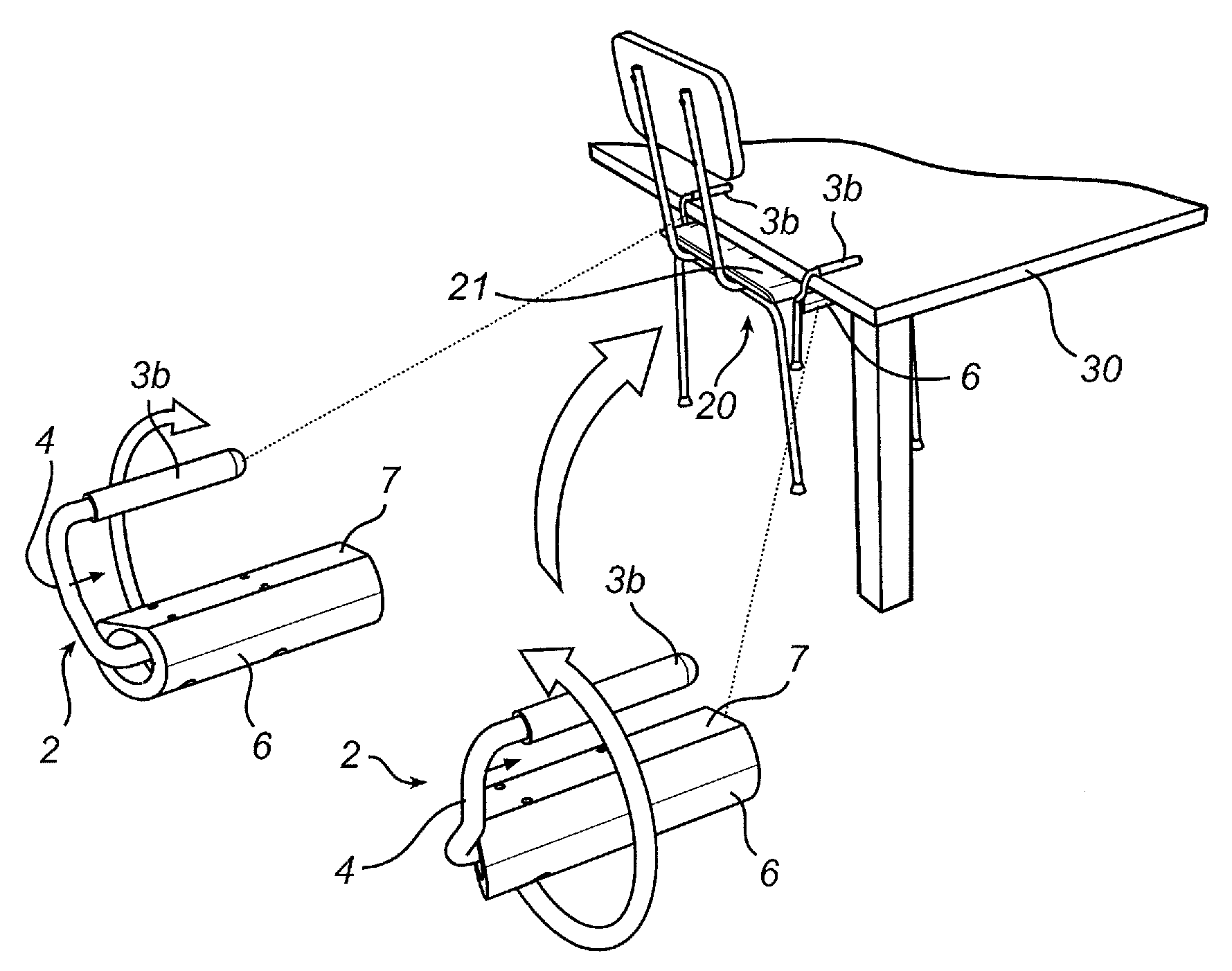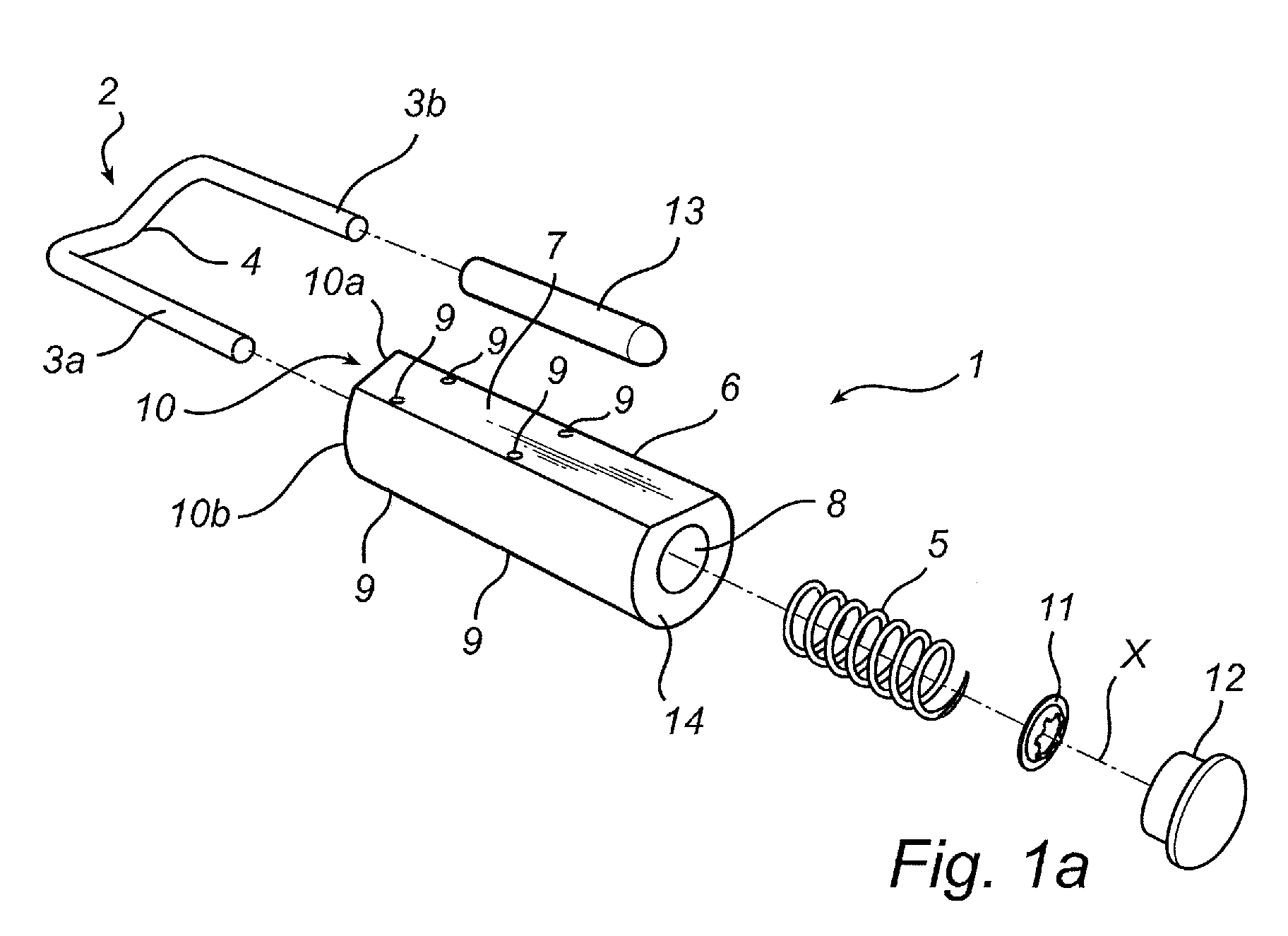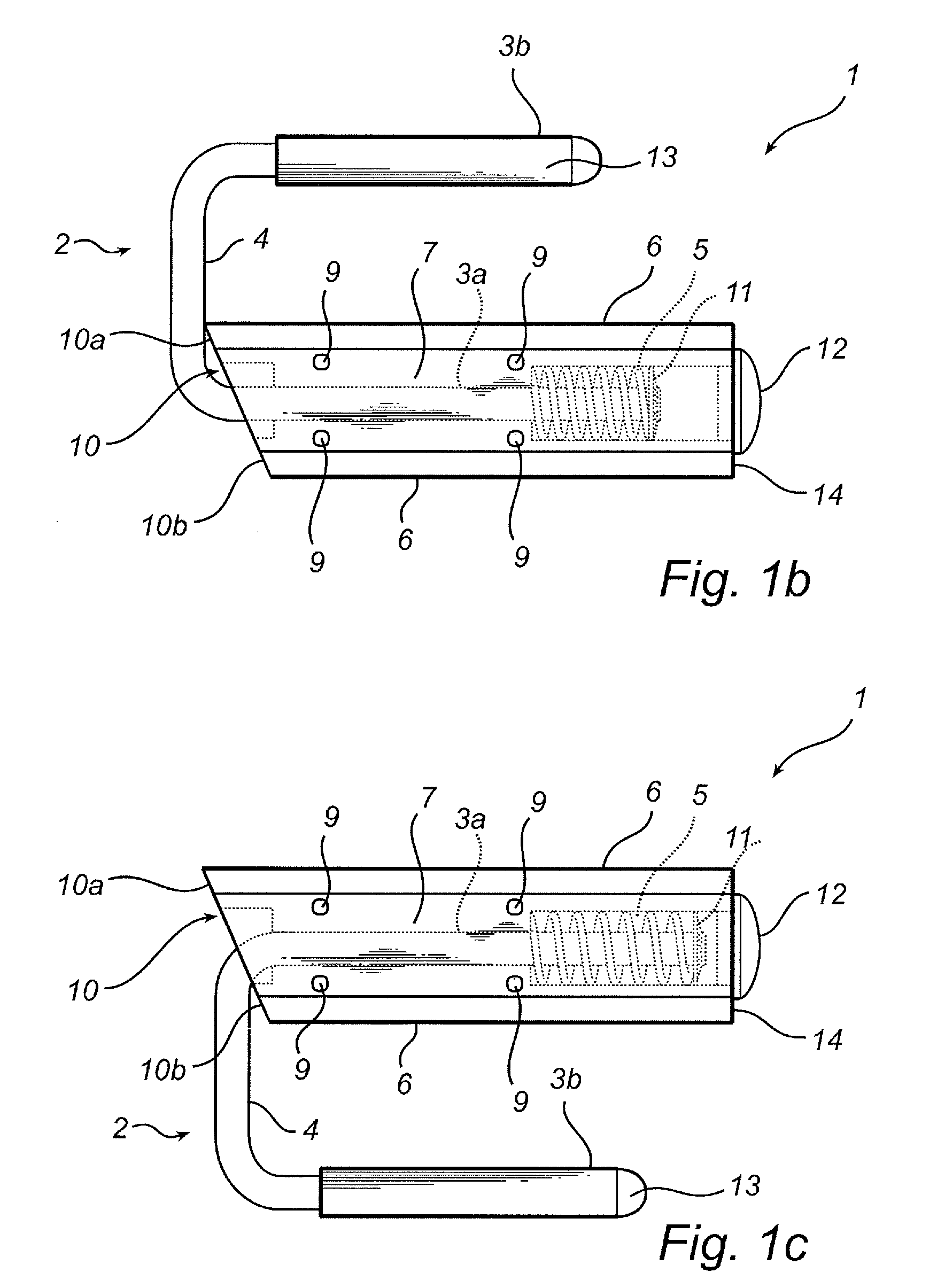Fitting for hanging a chair, and chair having such a fitting
a technology for hanging chairs and fittings, which is applied in the field of fittings for hanging chairs, can solve the problems of creating a lot of space for cleaning the floor surface, and achieve the effect of reducing the amount of space for cleaning
- Summary
- Abstract
- Description
- Claims
- Application Information
AI Technical Summary
Benefits of technology
Problems solved by technology
Method used
Image
Examples
Embodiment Construction
[0027]The present invention is described in more detail below with reference to the accompanying drawings in which preferred embodiments of the invention are shown. However, the invention can be implemented in many different forms and must not be interpreted as being limited to the embodiments presented here. Rather, these embodiments are intended to ensure that the present description is clear and comprehensive and fully conveys the scope of the invention to a person skilled in the art. In the drawings, the same numbers refer to the same elements.
[0028]FIGS. 1a, 1b and 1c show a fitting 1 according to the invention with a yoke 2 which has a U-shape with a first part 3a, a second part 3b and a middle part 4. The first part 3a and second part 3b of the yoke are substantially parallel and are separated by the middle part 4. Substantially right angles form between the middle part 4 and the first 3a and second 3b parts, respectively. The middle part 4 is slightly bent along the extent b...
PUM
 Login to View More
Login to View More Abstract
Description
Claims
Application Information
 Login to View More
Login to View More - R&D
- Intellectual Property
- Life Sciences
- Materials
- Tech Scout
- Unparalleled Data Quality
- Higher Quality Content
- 60% Fewer Hallucinations
Browse by: Latest US Patents, China's latest patents, Technical Efficacy Thesaurus, Application Domain, Technology Topic, Popular Technical Reports.
© 2025 PatSnap. All rights reserved.Legal|Privacy policy|Modern Slavery Act Transparency Statement|Sitemap|About US| Contact US: help@patsnap.com



